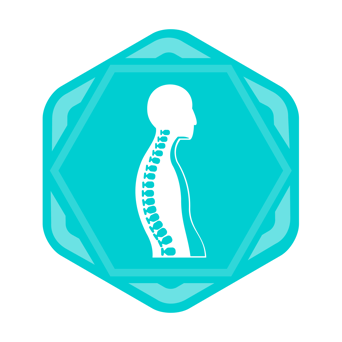Sarcopenia
'Unveiling the Hidden Struggle: Exploring Sarcopenia and Its Impact on Aging Gracefully.'
Dr. Nhehern N. Acharya (PT)
9/2/20233 min read


Introduction
Imagine your body as a grand orchestra, with each muscle playing a crucial role in your daily symphony. From helping you stand tall to assisting in every step, they are the silent champions of your life. But here's the plot twist – as early as your thirties, these loyal allies begin to fade away. For some, this departure is expedited by an unnoticed foe called sarcopenia, which, as you grow older, stealthily affects 10 to 20 percent of older adults. Its consequences are far-reaching, potentially leading to disability, loss of independence, frequent hospital visits, the need for long-term care, and even mortality. So, why haven't you heard of it?
A Belief in the Inevitable
Maybe it's because we've come to accept the natural aging process, believing that our hearing, vision, and mobility are destined to diminish as the years go by. However, the rapid loss of muscle mass and strength that accompanies sarcopenia isn't an unavoidable part of growing older; it's been quietly lurking all along. Many older adults aren't aware that their difficulties with stairs or chairs could be attributed to this condition. The good news is that recent years have witnessed significant progress in understanding, diagnosing, and treating sarcopenia.
The Mystery Behind Sarcopenia
Unraveling the origins of sarcopenia is like solving a complex mystery with multiple clues. Age-related changes in our bodies, including shifts in hormones, a decline in our ability to turn protein into muscle, increased inflammation, disruptions in the communication between our brains and muscles, and transformations at the cellular level, all contribute to this condition. Environmental and lifestyle factors such as inactivity, prolonged periods of bed rest, limited mobility, poor nutrition, dental issues, and even obesity can also play a role. Surprisingly, even those who stay physically active and individuals with extra weight aren't immune to its grasp. Chronic diseases can also pave the way for sarcopenia, either by triggering cellular changes or by hindering access to proper nutrition and exercise.
The Weight of Sarcopenia
The consequences of sarcopenia are as substantial as a gripping drama. The loss of muscle mass weakens the body, affecting balance, bone strength, and overall frailty. It invites fatigue, increases the risk of diseases, exacerbates existing conditions, leads to weight gain, and heightens the likelihood of malnutrition. These repercussions result in difficulties performing daily tasks, an elevated risk of falls and fractures, a diminished quality of life, a loss of independence, prolonged hospital stays, and heightened vulnerability after surgeries. Moreover, it's a costly adversary without even accounting for the expenses associated with the loss of independence and reduced everyday functioning.
The Detectives in White Coats
If you're 65 or older, your healthcare provider should be vigilant for signs of sarcopenia. They might use questionnaires to assess your risk, asking about your strength, walking speed, and mobility. Non-invasive tests can be employed to measure muscle mass, strength, and performance, aiming to uncover the root causes of sarcopenia.
Fighting Back Against Sarcopenia
In the battle against sarcopenia, there's a slew of potential treatments in development. Some target the cellular changes behind sarcopenia, while others focus on improving muscle function and reducing fatigue. Addressing underlying causes, like malnutrition, cancer, or gastrointestinal disorders, can also help. But the frontline warriors in this fight are exercise and nutrition. These two pillars, when combined, can slow the progression of sarcopenia, enhance physical performance, and prevent future losses. By taking steps to prevent sarcopenia, you're ensuring your strength and resilience remain intact. So, if you're 65 or older or at risk, make sure your healthcare provider discusses sarcopenia with you and addresses any symptoms or risk factors you might have. True strength emerges when you seize control of your health.
Keywords: sarcopenia, muscle loss, aging, muscle mass, muscle strength, elderly, physical health, muscle health, treatment, prevention, diagnosis, age-related muscle loss, healthcare, exercise, nutrition, muscle function, frailty, falls, disability, healthcare costs, aging gracefully, quality of life, independence, healthcare provider, risk factors, symptoms, treatments, prevention strategies, muscle health interventions, cellular changes, frailty, healthcare professional, strength training, muscle power, sarcopenia awareness, muscle health interventions.
WORKING HOURS
Monday - Saturday 8:00 AM - 8:00 PM
Sunday 9:00 AM - 5:00 PM
ADDRESS
Kairos Physio, F3 First floor, near Basillios Gym, St. Inez Rd., St. Inez, Panjim- Goa 403001.
CONTACT
+91 7259527374
kairosphysio@gmail.com
